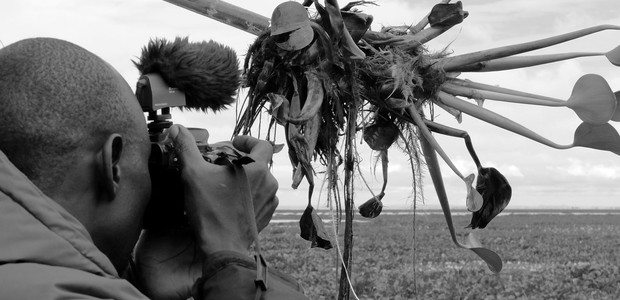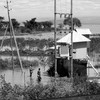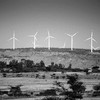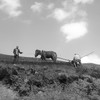In the shadow of the media spotlight: Lake Tana

The river-related media discourse in Eastern Nile countries is commonly dominated by one topic – the Grand Ethiopian Renaissance Dam (GERD). In the shadow of this media spotlight, a drama requiring immediate attention takes its course: the environmental degradation of Lake Tana.
Lake Tana, the source of the Blue Nile, provides the means of existence for millions of people. Continuous human encroachment in this sensitive habitat is creating increasing environmental damage. The effects won’t be a problem for Ethiopia alone – the consequences for downstream Sudan and Egypt could be dire.
The first step is to make all countries own the problem as their common problem.”
“This Lake is a natural water reservoir. If you impair the function of this lake, you are impairing its regular storage capacity,” says Dr. Wubalem Fekade, Head of the Social Development and Communication Unit at the Nile Basin Initiative (NBI) Eastern Nile Technical Regional Office (ENTRO). “The impact will also reach downstream countries.”
To shed light on Lake Tana’s problems in particular, and environmental degradation in the Eastern Nile Basin in general, NBI ENTRO organised the ‘Eastern Nile Media Training’, held from August 14 to 17, 2018 in Bahir Dar. Over 20 journalists, researchers and communication specialists from Ethiopia, Egypt, Sudan and South Sudan attended.
“The first step is to make all countries own the problem as their common problem – as a transboundary problem,” says Dr. Fekade. “The entry point is dealing with the media”, raising awareness and creating public support, he adds. “It is within our responsibility to alert the countries about this emerging catastrophe.”
A unique wetland ecosystem
Lake Tana and its surrounding areas are situated in the Amhara National Regional State in the north-west of Ethiopia. Approximately 84 kilometres in length and 66 kilometres wide, Lake Tana is Ethiopia’s largest lake and, at an elevation of 1,840 metres above sea level, it is also the highest lake in Africa.
Around 40 rivers and streams flow into the lake from its sizeable surrounding watershed area of about 15,000 square kilometres. It is the source of the Blue Nile River, which, after joining with the White Nile in Khartoum, flows through Sudan and Egypt before emerging into the Mediterranean Sea.
About 85 per cent of the River Nile water originates in Ethiopia, and the Lake Tana watershed, meaning the area is of vital international importance in ensuring the water supply to all of the countries downstream.
The Lake Tana region with a cultural history going back thousands of years uniquely blends natural and cultural heritage. Solemn monasteries and churches have grown around the lake, and many rare animal and plant species use the waters and its surrounding wetlands as a habitat.
Unfortunately, the area is threatened by intense resource use, pollution, large-scale agricultural interventions, and urbanisation.
Considerable risks
Lake Tana is only one of many ecological treasure troves in the Eastern Niles Basin, and it stands exemplary for the environmental degradation taking place across the basin. Intensive agriculture has caused massive soil erosion. Several species of animals and plants have already disappeared while the last wetlands and forests are still shrinking.
Even now, the majority of the local people lives in poverty and has no choice but to overuse their natural environment for survival. Of the original forest cover surrounding the lake and on islands in the lake, for example, only patches around churches and monasteries remain.
Lake Tana is everybody’s property which practically means nobody’s property.”
In addition to smallholder farming, the government has declared the region an Economic Growth Corridor. The development of irrigation and other infrastructure, of a hydropower plant, and of export-oriented agriculture will lead to a further intensification of agriculture, an influx of migrants, and a deterioration of water quality.
“Lake Tana is everybody’s property which practically means nobody’s property,” says Goraw Goshu, a Ph.D. fellow at Bahir Dar University. “The tragedy of the commons applies to the resource utilisation: there is no institution on the ground clearly responsible to manage Lake Tana,” Goshu adds. “Different users would like to maximise their profit out of the lake and its resources, which leads to misunderstanding and conflict.”
And as if all these threats wouldn’t be enough already, an invasive plant wrecks additional havoc: The aquatic weed water hyacinth (Eichhornia Crassipes), locally known as Emboch, an exotic free-floating invasive plant that is native to South America.
The story of a water weed
The water hyacinth was a reoccurring issue discussed throughout the workshop. Dr. Ayalew Wondie for example, an Associate Professor of Aquatic and Wetland Science at Bahir-Dar University presented a paper on the ‘Impacts of Water Hyacinth on Lake Tana Sub-basin’.
I will dig out more information about water hyacinth.”
Further, a one-day field-trip, allowed participants to witness the invasive plant on the lake.
Waakhe Simon Wudu Muray, a South Sudanese freelance journalist, said the trip was an eyeopener, making him aware of how water hyacinth affects the lake’s aquatic life and ecosystem and how this will eventually affect the entire Eastern Nile region. “I will dig out more information about water hyacinth and do many reports about it,” Waakhe said.
“I was wondering why the spreading of water hyacinth is so rapid in Lake Tana,” said Elzaharaa Ibrahim, a Sudanese freelance journalist. “While it exists in other places like Lake Victoria its impact is not as much as on Lake Tana. So this workshop is very important for me to answer that question,” she added.
The workshop and the field-trip certainly left lasting impressions on the participants. “This workshop was intentionally organised in this place for the media professionals to see and record it – and tell the world the story of this water weed,” says Dr. Fekade.
Unless coordinated mitigation measures are taken up by all Eastern Nile countries, water hyacinth and the environmental changes at Lake Tana bear considerable risks for Ethiopia itself and the downstream riparian states of the Blue Nile River. Lifting the shadow of reporting is an important step to encourage cooperation and to rescue Lake Tana, as well as other unique habitats in the Eastern Nile region.





